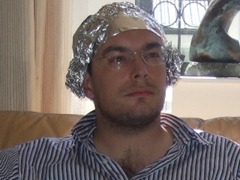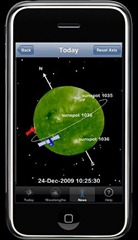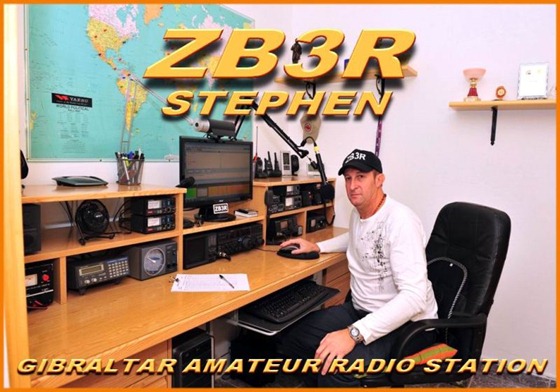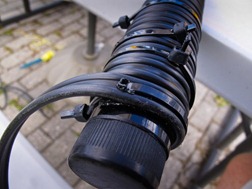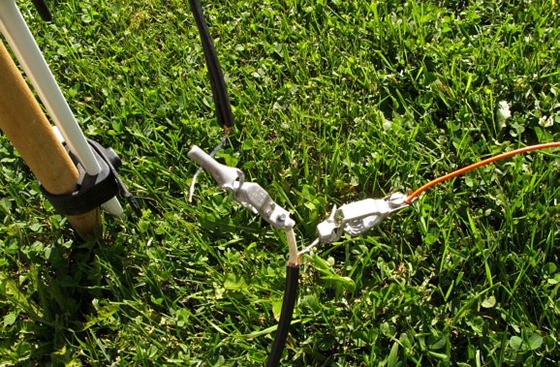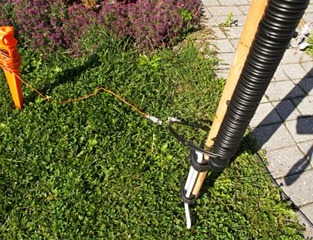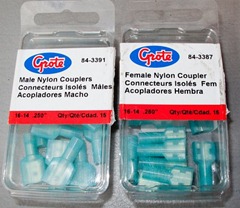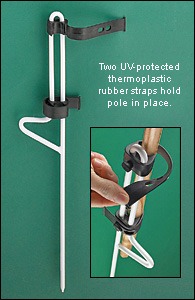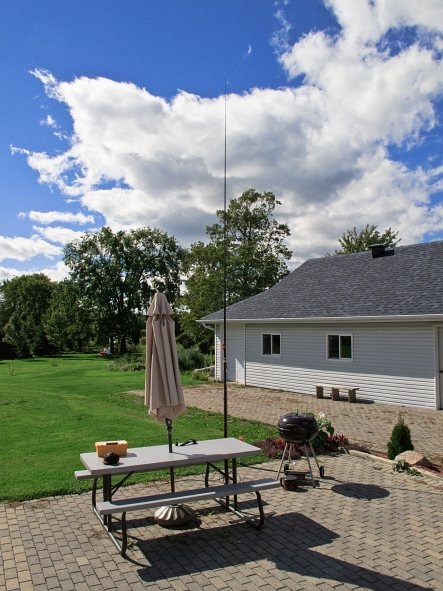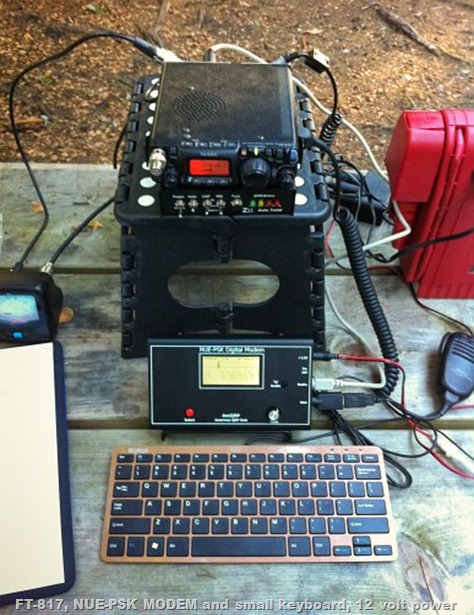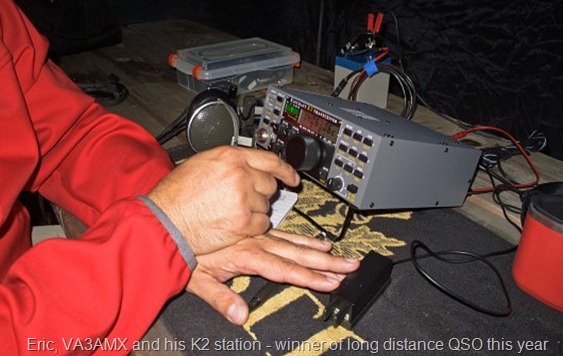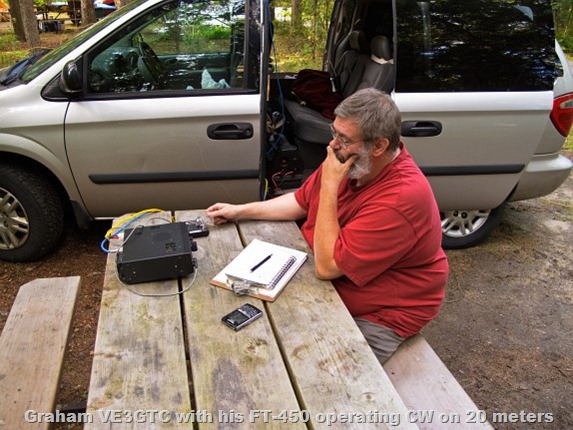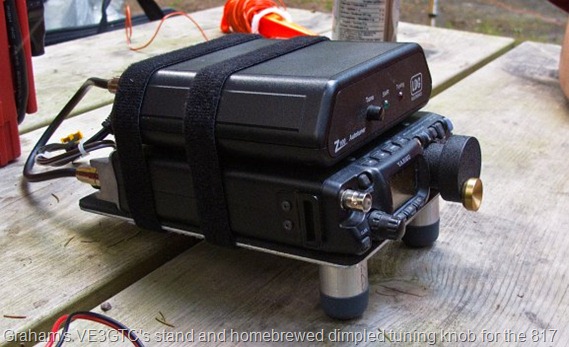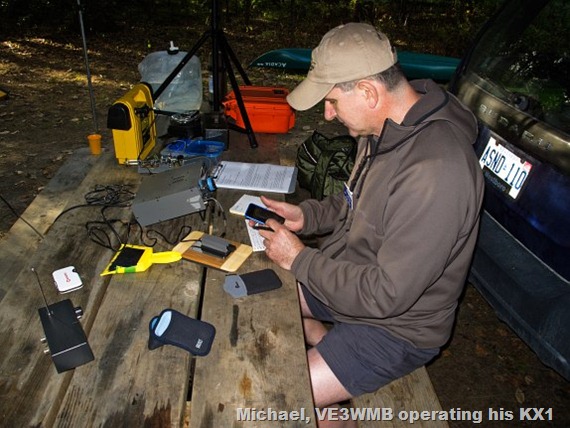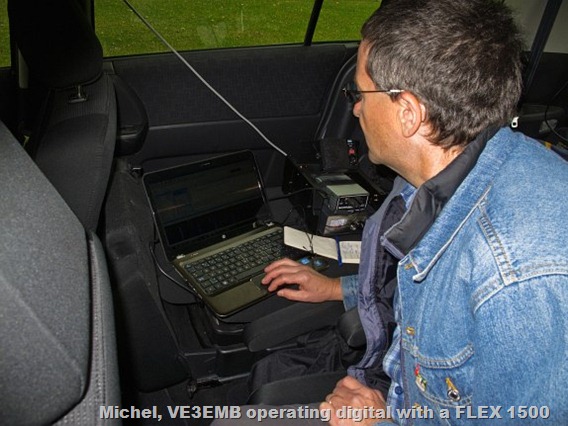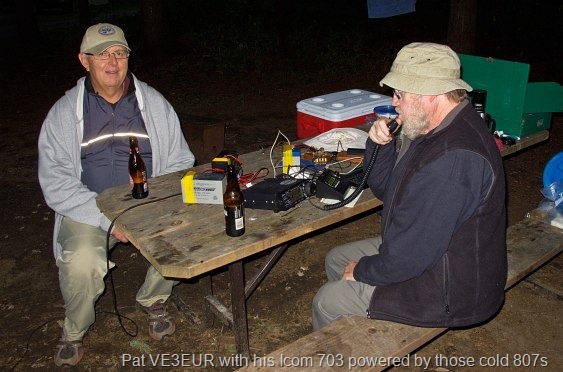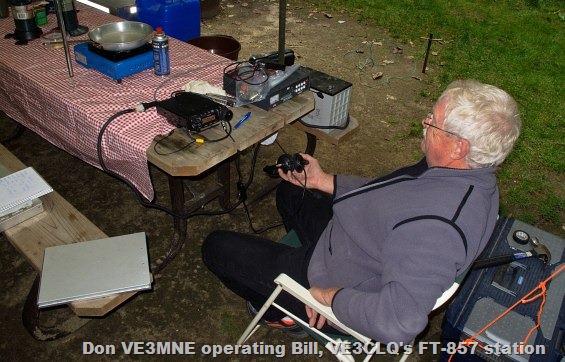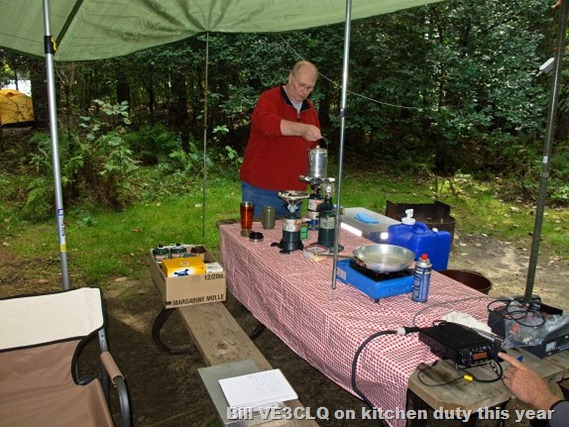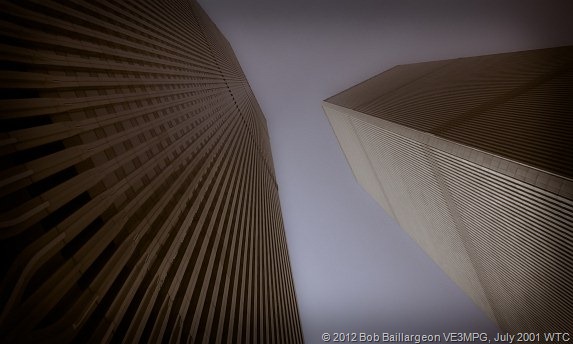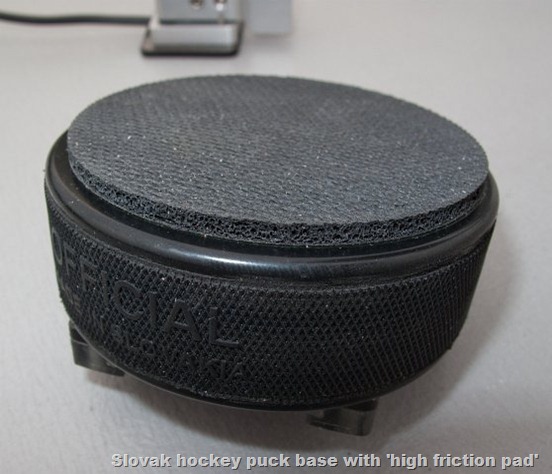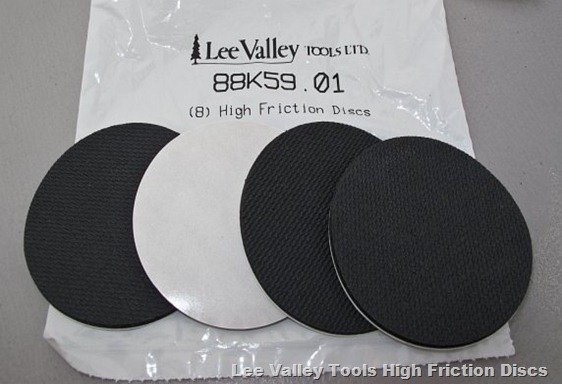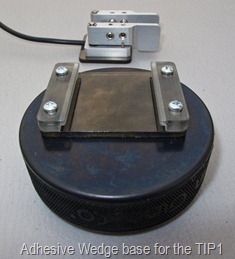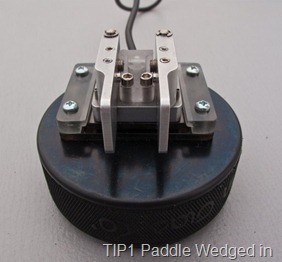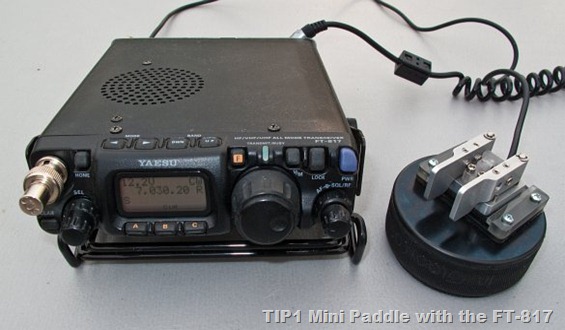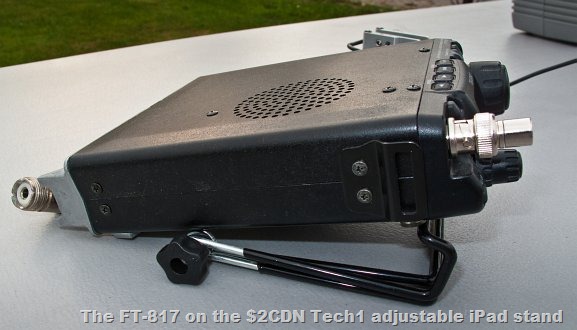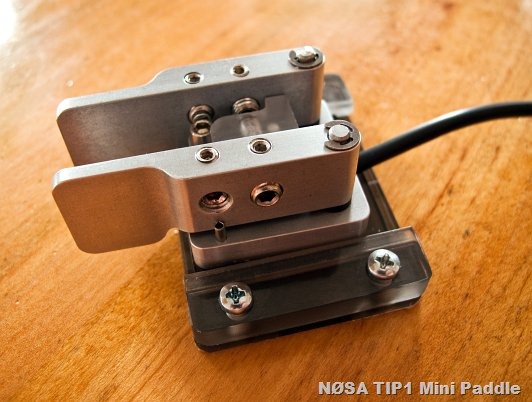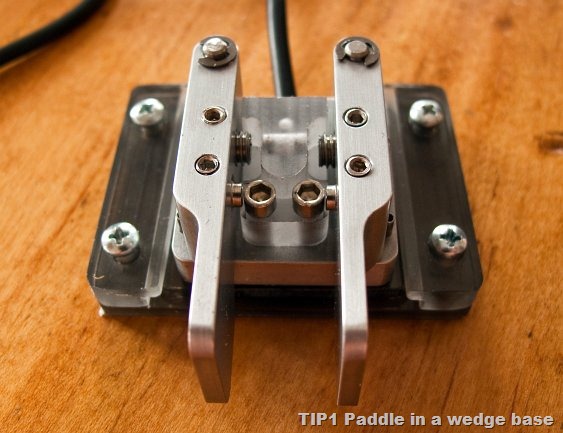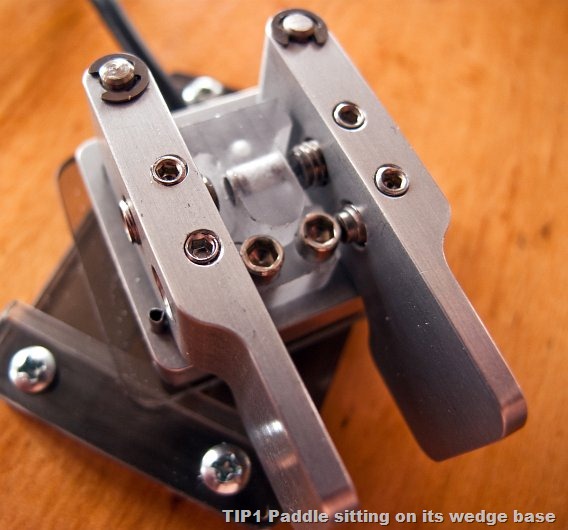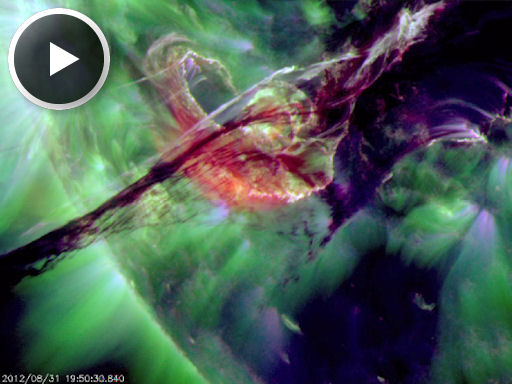This article is part 2 of the construction of the St. Louis Vertical – a continuation of part 1 that I published a couple of years ago. You can head over to part 1 of the construction article here.
Continuing from grinding down the Wonderpole clips I further grind them down with the Dremel tool so they are flush with the tube; this will allow the twin lead to lay flat along the body and also allow the adhesive to better cover the tubular shape of the Wonderpole.
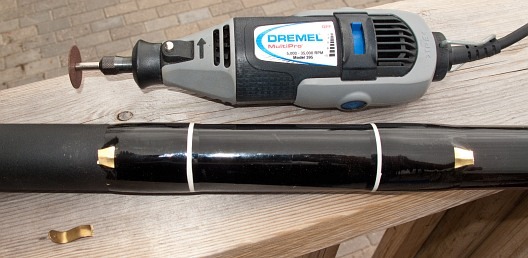
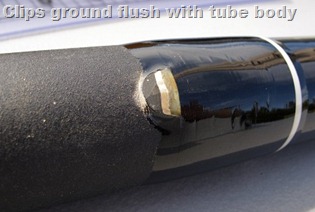
The next step caused me to think very carefully on how to wrap the twin-lead onto the Wonderpole. I had read on various sites describing how hard this was going to be. Some described it as a two man operation to ensure that the twin-lead was wrapped tightly around the pole. Hmmm, this was going to be a problem unless I figured an easy method to accomplish this task. Of course thinking about these last two years I finally came up with a solution. Enter some 3M Indoor/Outdoor carpet tape. Man this stuff was sticky but I think it would hold and as it turned out was an elegant solution. 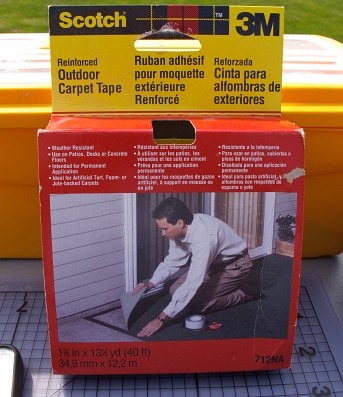
The trick was to apply the tape every inch or so, keeping the backing on until I reached the next inch while turning, by hand, the twin-lead. This was hard work and each time I stopped to rest my aching hands I attached a zip tie to hold the stiff twin-lead in place. Eventually I surmised that additional tape was needed so I eventually covered the entire length of the pole as I wound the twin-lead. 
There was still a problem – the stiff twin-lead was pulling away despite the extreme stickiness of the 3M tape. Thinking quickly now as I was at least two hours into winding this twin-lead on the pole. I went to my workbench in the garage where I do the occasional refinishing work on antiques. I use a Black & Decker heat gun to lift old paint from projects I’m working on. I figured if I heated the twin-lead sufficiently it would take on the cylindrical shape of the pole – an it did – it worked great, though I kept the zip ties on just in case.
You can see my progress in the photo below. The white tape backing is removed to expose the sticky backside of the tape; and you can see the zip tie in place while I rest my hands for awhile.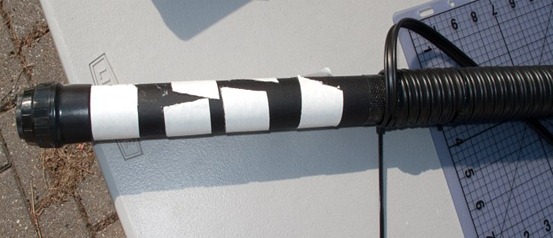

I had a good supply of RCA twin-lead that I had purchased about 10 years ago at Princess Auto, a surplus type store located across Canada. Of course halfway through construction I had neglected to figure out how much of the 50 foot length of twin-lead I needed. A quick calculation of number of turn per inch showed that I would have almost five feet left over. That horseshoe was working overtime now…with this important information in hand I continued winding until I reached the end of the pole. I still have a 50 foot length and a 100 foot length set aside for other projects using twin-lead.
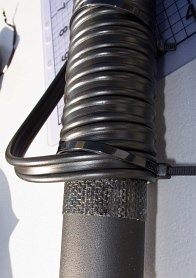
The picture at the left shows detail of the zip tie and the double sided tape exposed for winding. Every few inches I would fire up the heat gun to meld the twin-lead to the pole shape.
After almost three hours I had completed the toughest part of constructing a St. Louis Vertical and took a good rest before continuing this homebrew antenna.
Part 3 to follow tomorrow.
